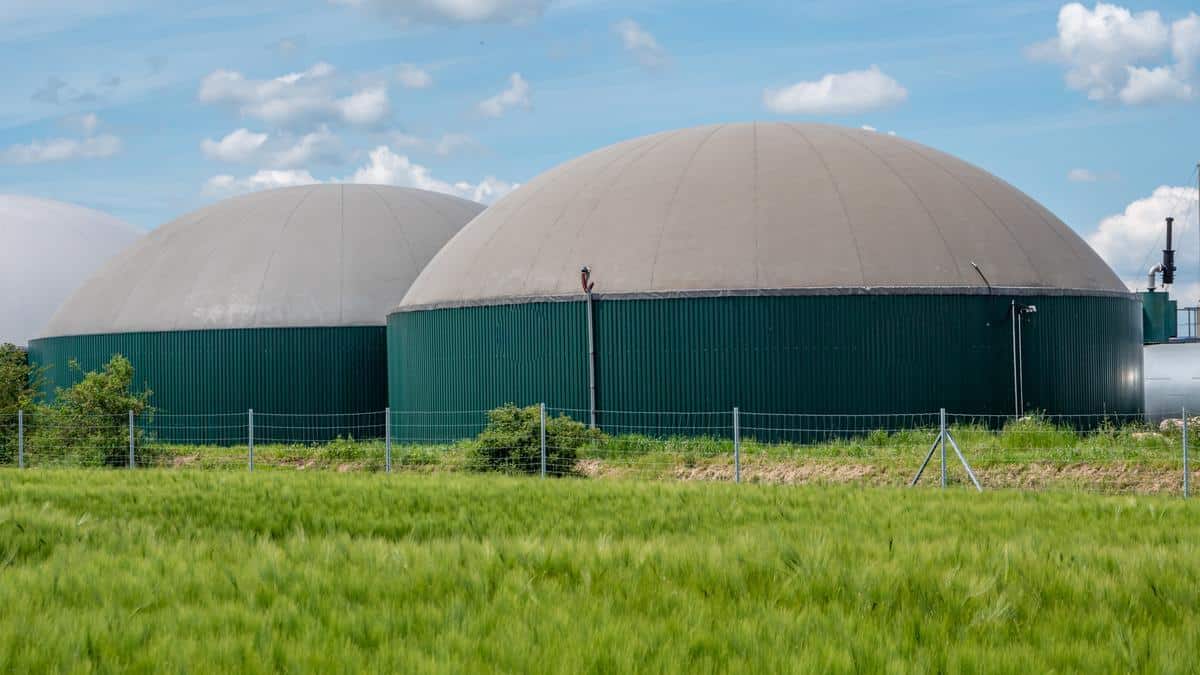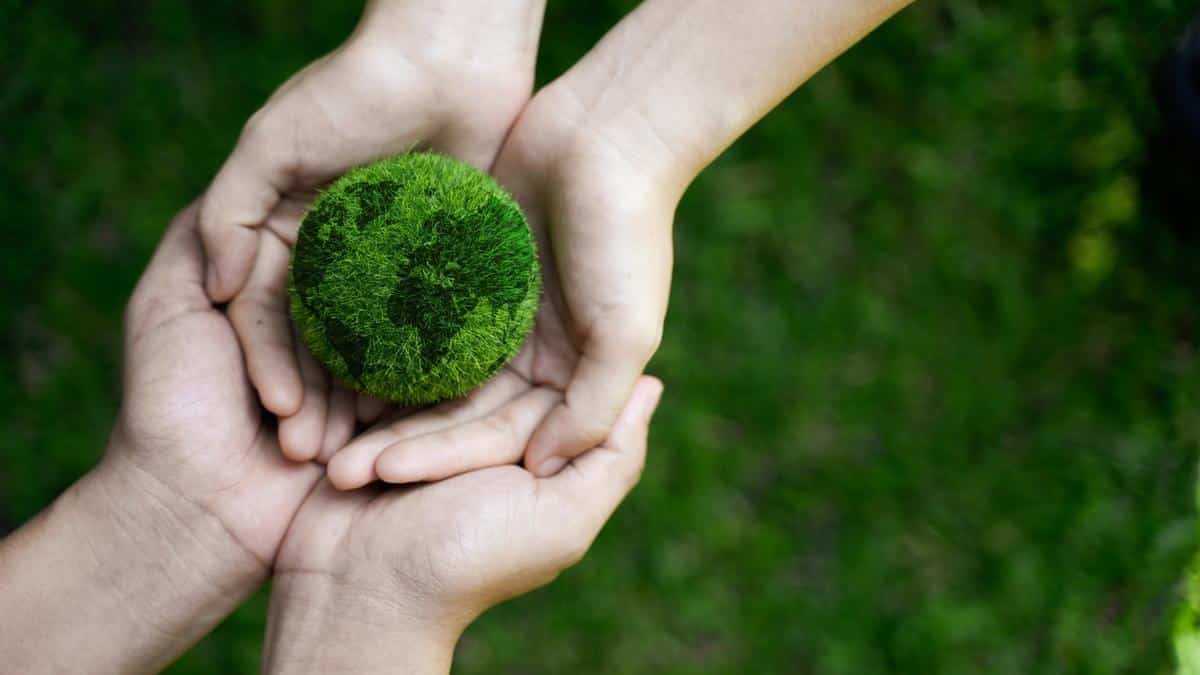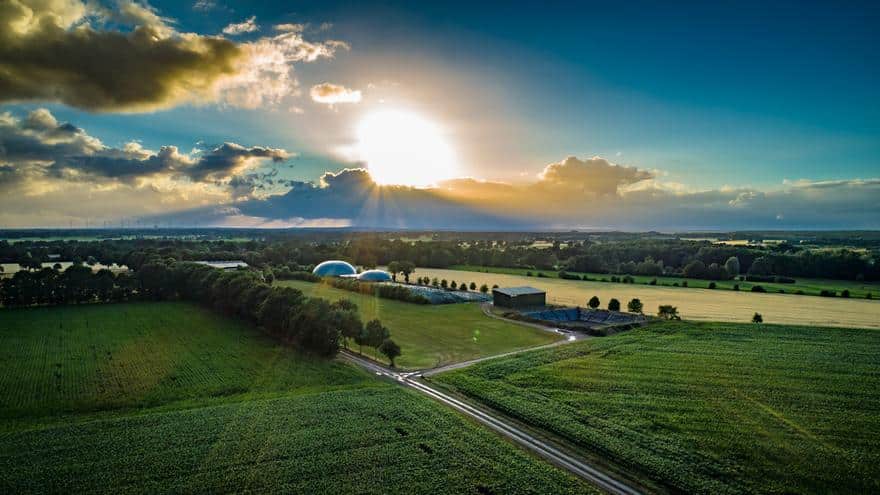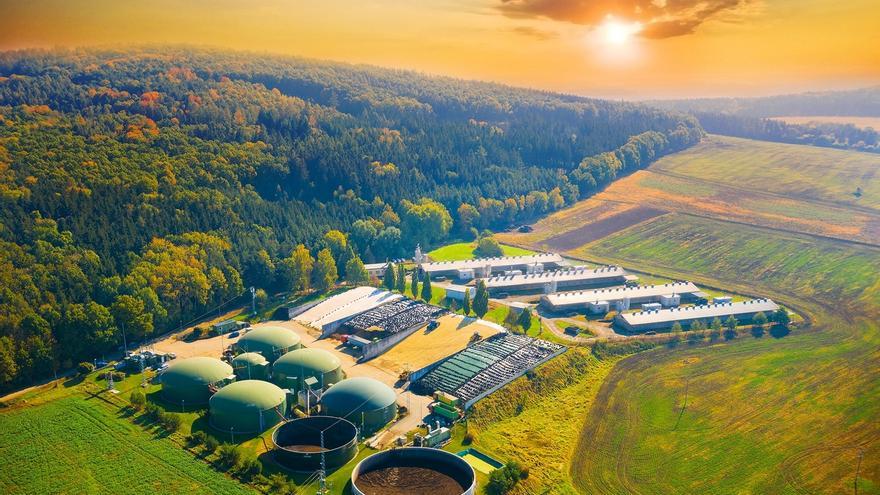The quest for energy autonomy has become a priority for all European countries without neglecting compliance with the climate agenda and the decarbonization and renewable energy targets approved by Brussels for 2030.
Russia‘s invasion of Ukraine has further accelerated this race. The European Commission has approved the REPowerEU plan to make Europe independent from Russian fossil fuels as soon as possible. One of the key measures of this plan is the development of the biomethane industry in Europe, which is expected to produce 35 bcm (billions of cubic meters/year) of this renewable gas by 2030, i.e. ten times the current level of production.
A major challenge involving a volume similar to the natural gas consumption of the Netherlands and almost 10% of total EU consumption, an ambitious target that has accelerated the great European race between countries to lead the development of this renewable energy.
This is because the development of biomethane, i.e. the renewable gas obtained from a biogas purification process, has a composition and energy power comparable to those of natural gas, allowing it to be injected into the gas network and used for everyday purposes such as domestic heating or large industrial processes that use natural gas, but in this case with 100% renewable energy.
This characteristic means that more and more European countries are opting for this energy source every year, given its great future potential. Spain is the third European country with the most possibilities for its production, but today it is lagging behind in its development and far behind others such as Denmark, Germany and France for which biomethane is a strategic priority.
The great potential of the renewable gas sector is becoming more and more unquestionable every year. The combined production of biogas and biomethane in 2020 amounted to 191 TWh (according to the report by PwC Spain, as requested by the Naturgy Foundation, in order to analyze the potential development of biogas and biomethane in Spain and its impact on the reduction of the carbon footprint). However, the sector will need legislative support and relevant investments in the coming years to take advantage of its full potential.
In reference countries at European level the estimated applied share for biomethane is around 10% of final consumption, in which Germany stands out with a share of 20%. In Denmark, for example, biogas production is already carried out in 180 plants based on the treatment of livestock manure and organic waste. Denmark is the European country of reference, with 28% of the gas consumed coming from renewable sources. In France, 91 new units started operating in 2020 and 123 other plants started operating between January and October 2021. Following France, the countries that experienced the greatest growth in the number of biomethane plants are Italy with 11 plants in 2020 and Denmark with another 10 plants in the same year.
One million potential jobs
According to data from the European Biogas Association (EBA) on the analysis of the sector, in 2019 there were a total of 18,943 biogas production facilities in Europe. This is 4% more plants than in the previous year, producing a total of 193 TWh of biogas. As for biomethane, it continued to grow to 725 plants during 2019, which produced 26.7 TWh.
According to data available in the Administrative Register of Electricity Production Facilities (PRETOR) of the Ministry for Ecological Transition and Demographic Challenge, there are 146 biogas facilities in Spain, of which 130 reported biogas consumption in 2020. Biogas production in these plants is estimated to be around 2.74 TWh.
However in Spain, according to Enagás data, production does not reach 1% and the objective is to reach this figure in 2030, according to the Biogas Roadmap in force, which groups 45 measures established in five strategic areas. Meanwhile, the forecast is that in Europe approximately 30-40% of the EU’s gas needs can be covered by biogas or biomethane. This growth represents 420,000 job opportunities by 2030 and more than 1 million jobs by 2050.
 Biogas plant
Biogas plant
European producers have around 19,000 biogas and 900 biomethane plants and are looking for new forms of cooperation with third-party countries to support biogas deployment outside EU borders, according to the EBA. In this context, the streamlining of permits and procedures for opening new facilities is essential. In France, for example, it only takes 12 months to build a plant, unlike in Spain, where this period is longer. In fact, biomethane projects are subject to a multitude of legal requirements because they overlap with areas such as agriculture, waste management, recycling, the energy industry, fertilizers and the production of soil improvers that slow down the process.
Measures triggering the expansion of biomethane in Europe
Permits for converting a biogas CHP plant towards biomethane production should be accelerated with minimum requirements and special attention should be given to the realization of pilot and demonstration projects across Europe.
To avoid such complex administrative procedures, one-stop shops combining environmental and construction permits can be established. In such a way as to regulate review times with time limits and promote more transparent communication to permit applicants. In addition, permits can extend the validity to reduce the administrative burden.
National strategies should provide for investment support measures, incentives to switch biogas plants to biomethane plants and the creation of national support schemes, based for example on long-term financing periods and increasing the number of tenders per year with a minimum accepted capacity.
The risk of long lead times for biomethane production equipment can be mitigated through a European guarantee fund for renewable technologies to reduce investment risk. This will allow technology suppliers to source and reduce lead times, but will also mitigate risks related to feedstock price volatility.
 Zero Net Emissions
Zero Net EmissionsThis, in turn, will allow a greater number of feedstocks to be used for biomethane production and, therefore, will increase its long-term potential and reduce investment costs.
Biomethane Start-up in Spain
In 2021 Naturgy was the first company to inject renewable landfill gas into Spain’s gas distribution network. The Elena Renewable Gas Project operates in Parc de l’Alba in Cerdanyola del Vallés in Barcelona, next to the Elena landfill site. The plant produces 12 GWh per year of biomethane, equivalent to the annual consumption of 3,200 households, following an investment of 2.2 million euros. The aim is to avoid the emission of 2,400 tons of CO2 into the atmosphere per year.
The Butarque WWTP renewable gas project (Madrid), part of the European ECO-GATE Consortium, was a pilot project co-financed by the European Union and led by Nedgia. The installation consisted of a biomethane production module for the injection of gas into Nedgia’s network, generated from waste from the Canal Isabel II wastewater treatment plant.
The European ECO-GATE Consortium is co-financed with European Union funds through the CEF program and is made up of 38 companies from four countries, including Spain, followed by Portugal, France and Germany.
Unue is the first plant to generate biomethane from agro-industrial waste with injection into the gas grid. It is a facility promoted by private initiative. The Burgos-based company Biogasnalia, a benchmark in waste management in Castilla y León, is responsible for generating biogas at the facility. The aim is to produce and inject approximately 20 GWh per year of biomethane into the Spanish gas system. This would be equivalent to a reduction in emissions of around 30,000 tons of CO2 equivalent.
The medium-term objectives:
The EU is considering setting binding targets for the penetration of renewable gases in the energy mix at the level of use. In this respect, it is also important to establish monitoring systems to assess compliance with these targets. The estimated mandatory quota for biomethane in leading European countries is around 10% of final gas consumption in 2030, with countries such as Germany establishing a quota of 20%.
 Long-term neutral strategy
Long-term neutral strategyIn fact, through the recent REPowerEU Plan to end the EU’s dependence on Russian fossil fuels, the European Commission has set a Biomethane Action Plan that aims to boost biomethane production to 35 billion m3 per year by 2030, a target of 6% to 8% of current EU gas consumption.
The future is a green, non-polluting, non-fossil energy with high guarantees in terms of stability and price.
For the full article, please visit Diario de Ibiza website here.

